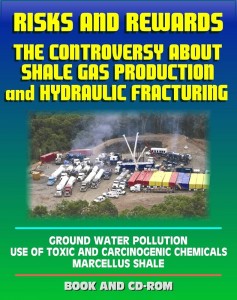.
.
From an Article by Tsvetana Paraskova (Oilprice.com), Oil & Gas 360, October 18, 2023
.
.
Shale pioneer Chesapeake Energy has approached its peer Southwestern Energy for preliminary talks about a possible acquisition that would create America’s top shale gas producer by market value, Reuters reports, citing sources with knowledge of the matter.
The talks are in the early stages and there are no guarantees a deal could be reached, according to Reuters’ sources.
Chesapeake Energy, which went through bankruptcy in 2020 when oil and gas prices crashed, has been solidifying in the past year its strategic focus on its gas assets in the Marcellus shale in Appalachia and in the Haynesville shale play in Louisiana while reducing its Eagle Ford position.
Southwestern Energy operates in the Appalachia shale plays and in Haynesville, too, and could offer assets complementary to Chesapeake Energy’s core areas of operations, analysts say. Southwestern Energy is valued by the market at around $12 billion including debt, according to Reuters.
A potential tie-up between Chesapeake Energy and Southwestern Energy would create the largest natural gas-focused producer in the shale patch by market valuation, ahead of the current leader EQT Corporation.
This year the U.S. shale industry has been looking to boost scale, efficiencies, and returns to shareholders by adding additional acreage. Just last week, ExxonMobil announced a blockbuster deal to buy Pioneer Natural Resources in an all-stock transaction valued at $59.5 billion, or $253 per share, based on ExxonMobil’s closing price on October 5, 2023. The implied total enterprise value of the transaction, including net debt, is around $64.5 billion.
Back in August, Chesapeake Energy’s president and chief executive officer Nick Dell’Osso said on the Q2 earnings call that the company is “always paying really close attention to what’s available. If there are good attractive assets to buy at a time when others maybe are not able to be as aggressive, that’s a real strategic advantage. So, we try to hold on to that, and we can wait for those things to come to us,” Dell’Osso added.
#######+++++++#######+++++++#######++++++++
SEE ALSO: Risks and Rewards: The Controversy About Shale Gas Production and Hydraulic Fracturing, Ground Water Pollution, Toxic and Carcinogenic Chemical Dangers, Marcellus Shale, Fracking (Book and CD-ROM) Ring-bound – April 29, 2011
Gain a complete understanding of the important controversy over hydraulic fracturing for shale gas production with this outstanding ringbound book and CD-ROM set with a collection of up-to-date official documents and publications on the risks and rewards of shale gas. It includes the new report from the House Committee on Energy and Commerce disclosing that that oil and gas service companies conducting hydraulic fracturing used more than 2500 fracturing products containing 750 chemicals, some of which are toxic and carcinogenic.
This report lists every chemical disclosed by the industry, and reveals that some of the chemicals remain proprietary and cannot be identified. According to the report: “Hydraulic fracturing has helped to expand natural gas production in the United States, unlocking large natural gas supplies in shale and other unconventional formations across the country.”
As the use of hydraulic fracturing has grown, so have concerns about its environmental and public health impacts. One concern is that hydraulic fracturing fluids used to fracture rock formations contain numerous chemicals that could harm human health and the environment, especially if they enter drinking water supplies.
The opposition of many oil and gas companies to public disclosure of the chemicals they use has compounded this concern. Contents include material from the EPA, USGS, Department of Energy, U.S. Congress, the Energy Information Administration (EIA) and others.
There is a complete reproduction of EPA public meeting comments from events in Texas, Colorado, Pennsylvania, and New York, offering valuable insight into the controversy. Technical documents and regulations provide unique details and understanding. An up-to-date primer from the U.S. Department of Energy provides a comprehensive overview of shale gas production in the United States – including the use of hydraulic fracturing – and environmental protection issues, especially water resource management.
Contents include: The Importance Of Shale Gas * The Role of Natural Gas in the United States Energy Portfolio * The Advantages of Natural Gas * Natural Gas Basics * Unconventional Gas * The Role of Shale Gas in Unconventional Gas * Looking Forward * Shale Gas Development * Geology * Sources of Natural Gas Shale Gas * Barnett Shale * Fayetteville Shale * Haynesville Shale * Marcellus Shale * Woodford Shale * Antrim Shale * New Albany Shale * Regulatory Framework * Federal Environmental Laws * State * Local Regulation * Impacts on Water Quality * Clean Water Act * Safe Drinking Water Act * Oil Pollution Act of 1990 Spill Prevention Control and Countermeasure * Regulation of Impacts on Air Quality * Clean Air Act * Air Permits * Regulation of Impacts to Land * Resource Conservation and Recovery Act (RCRA) * Endangered Species Act * State Endangered Species Protections * Operations on Public Lands * Federal Lands * State Lands * Other Federal Laws and Requirements that Protect the Environment * Comprehensive Environmental Response, Compensation, and Liability Act * Emergency Planning and Community Right-to-Know Act * Occupational Safety and Health Act * Environmental Considerations * Horizontal Wells * Reducing Surface Disturbance * Reducing Wildlife Impacts * Reducing Community Impacts * Protecting Groundwater: Casing and Cementing Programs * Hydraulic Fracturing * Fracture Design * Fracturing Process * Fracturing Fluids and Additives * Water Availability * Water Management * Naturally Occurring Radioactive Material (NORM) * Air Quality * Sources of Air Emissions * Composition of Air Emissions * Technological Controls and Practices * Summary * Acronyms and Abbreviations * Definitions

